Biodiversity, community structural shifts, and biogeography of prokaryotes within Antarctic continental shelf sediment
- PMID: 12732511
- PMCID: PMC154503
- DOI: 10.1128/AEM.69.5.2463-2483.2003
Biodiversity, community structural shifts, and biogeography of prokaryotes within Antarctic continental shelf sediment
Abstract
16S ribosomal DNA (rDNA) clone library analysis was conducted to assess prokaryotic diversity and community structural changes within a surficial sediment core obtained from an Antarctic continental shelf area (depth, 761 m) within the Mertz Glacier Polynya (MGP) region. Libraries were created from three separate horizons of the core (0- to 0.4-cm, 1.5- to 2.5-cm, and 20- to 21-cm depth positions). The results indicated that at the oxic sediment surface (depth, 0 to 0.4 cm) the microbial community appeared to be dominated by a small subset of potentially r-strategist (fast-growing, opportunistic) species, resulting in a lower-than-expected species richness of 442 operational taxonomic units (OTUs). At a depth of 1.5 to 2.5 cm, the species richness (1,128 OTUs) was much higher, with the community dominated by numerous gamma and delta proteobacterial phylotypes. At a depth of 20 to 21 cm, a clear decline in species richness (541 OTUs) occurred, accompanied by a larger number of more phylogenetically divergent phylotypes and a decline in the predominance of Proteobacteria. Based on rRNA and clonal abundance as well as sequence comparisons, syntrophic cycling of oxidized and reduced sulfur compounds appeared to be the dominant process in surficial MGP sediment, as phylotype groups putatively linked to these processes made up a large proportion of clones throughout the core. Between 18 and 65% of 16S rDNA phylotypes detected in a wide range of coastal and open ocean sediments possessed high levels of sequence similarity (>95%) with the MGP sediment phylotypes, indicating that many sediment prokaryote phylotype groups defined in this study are ubiquitous in marine sediment.
Figures
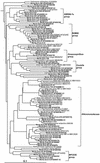
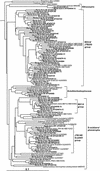
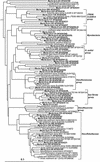
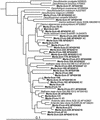
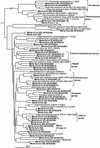
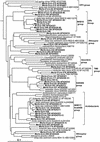
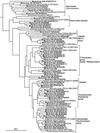
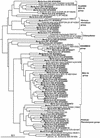
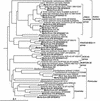

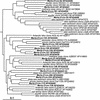
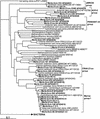


References
-
- Andrews, J. H., and R. F. Harris. 2000. The ecology and biogeography of microorganisms of plant surfaces. Annu. Rev. Phytopathol. 38:145-180. - PubMed
-
- Azam, F., and R. A. Long. 2001. Oceanography—sea snow microcosms. Nature 414:495-497. - PubMed
-
- Bates, N. R., D. A. Hansell, C. A. Carlson, and L. I. Gordon. 1998. Distribution of CO2 species, estimates of net community production, and air-sea CO2 exchange in the Ross Sea polynya. J. Geophys. Res. Oceans 103:2883-2896.
-
- Bindoff, N. L., G. D. Williams, and I. Allison. 2002. Sea-ice growth and water mass modification in the Mertz Glacier Polynya during winter. Ann. Glaciol. 33:399-406.
Publication types
MeSH terms
Substances
Associated data
- Actions
LinkOut - more resources
Full Text Sources
Other Literature Sources
Molecular Biology Databases
Miscellaneous

